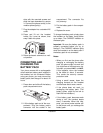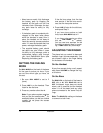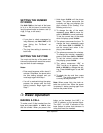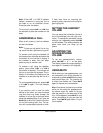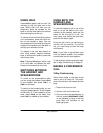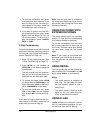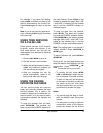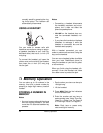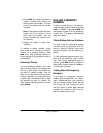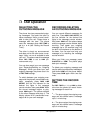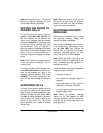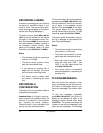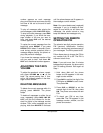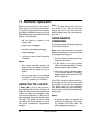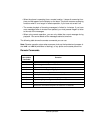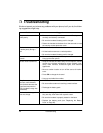
21Memory Operation
4. Press
MEM
, then enter the memory
location number (
0
–
9
) where you
want to store the number. The tone
sounds to indicate that the number
is stored.
Note:
If the phone sounds five quick
beeps, you have made an entry
error and the number was not
stored. Re-enter the location num-
ber correctly.
5. Repeat the steps to enter more
numbers.
To replace a stored number, simply
store a new one in its place. To erase a
number for a memory location, press
MEM
twice. Then press the memory lo-
cation number (0–9) you want to clear. A
tone sounds.
Entering a Pause
In some telephone systems, you must
dial an access code (9, for example) and
wait for a second dial tone before you
can dial an outside number. You can
store the access code with the phone
number. However, you should also store
a pause after the access code to allow
the outside line time to connect. For
each 2-second pause you want to enter,
press
REDIAL
.
DIALING A MEMORY
NUMBER
To dial a number stored in the memory,
lift the handset from the base and press
LINE 1
or
LINE 2
. Then press
MEM
and
the location number (0–9) by pressing a
number key. The phone automatically
dials the number.
Chain-Dialing Service Numbers
For quick recall of numbers for special
services (such as alternate long dis-
tance or bank by phone), store each
group of numbers in its own memory lo-
cation.
To use the stored special service num-
bers, dial the service’s main number
first. Then, at the appropriate place in
the call, press
MEM
and the number for
the memory location where the addition-
al information is stored.
Testing Stored Emergency
Numbers
If you store an emergency service’s
number (police department, fire depart-
ment, ambulance) and you choose to
test the stored number, make the test
call during the late evening or early
morning hours to avoid peak demand
periods. Also, remain on the line to ex-
plain the reason for your call.



